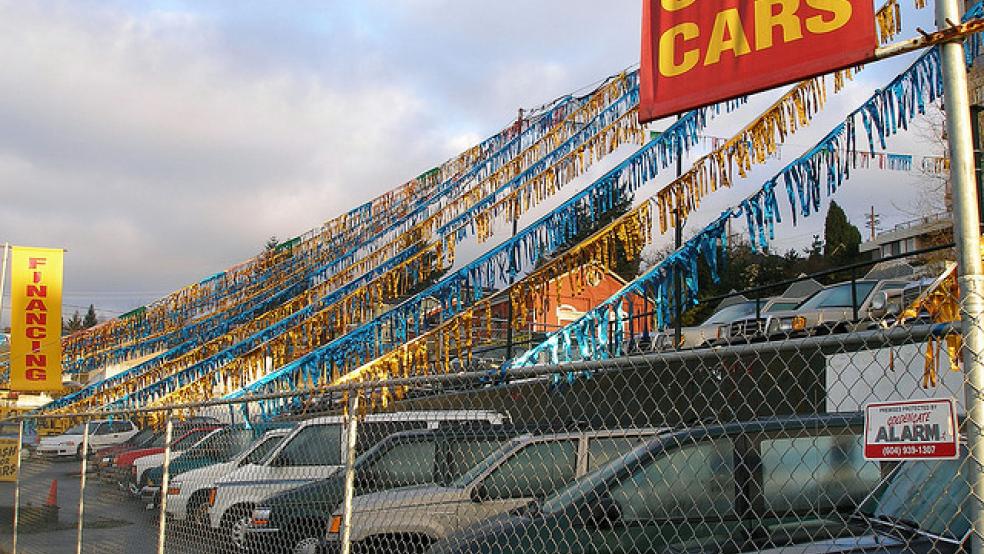One of the most nerve-wracking things about buying a used vehicle is negotiating the best price. Most consumers aren’t used to haggling on a daily basis, but when it comes to buying a set of wheels, the nature of auto sales thrusts these new, often familiar rules of engagement in our faces.
Below is our guide to getting the best, most fair deal you can:
1. Establish your budget and get financing
Before you begin shopping it’s important to know your budget. You should also make sure that if you need financing that you try to get it before you go to a dealership. While car dealers often offer financing you’ll lose your leverage and ability to negotiate if you’re relying on the dealership to finance the deal. If you know ahead of time what you can afford and where your financing is coming from, you’re setting yourself up to take advantage of a great deal when you find it.
Related: How Millenials Could Damage the U.S. Economy
2. What car or truck do you want?
There are different ways to figure out what kind of vehicle you want. You can read reviews, check outConsumer Reports, watch YouTube videos or head to a local dealership. If you head to the dealership, don’t buy yet; this is just the discovery phase. Here are some things to learn when doing your research:
What are the different trims that you can get? For example, if you’re looking for a Honda Accord you need to learn the difference between the Accord LX and the Accord EX.
What are the different generations of the vehicle and which ones are the best? While the manufacturers come out with a new model each year, they only overhaul the vehicle every few years. Learn what the different generations are for the cars you like and make sure there aren’t any big negative changes such as major changes to the engine. Also be wary of buying the first year of a car from a new generation. It’s like buying a new Apple product, you don’t always want the first version.
What are the major maintenance and repair issues? You should know if a car needs a lot of work at 100,000 miles or at any other major milestones. The last thing you want to do is buy a car and then have to spend a lot of money to maintain it. If you know the major maintenance costs (timing belt, water pump, clutch, brakes, etc.) you can ask the right questions to know what major maintenance jobs are coming up.
3. Study the market
Spend time studying and learning the market for the vehicle you want. Check the various websites, Follow cars and get a sense for the different prices. For example, if I’m looking for a Ford F150 in Los Angeles here are some questions I would consider:
Are there a lot of F-150s available?
Do they sit on the lot for a long time or do they sell quickly? If they tend to sit you probably have more room to negotiate.
Do they decline in price rapidly as they get more miles or do they hold their value?
4. Know the dealership
As soon as you find a car you like that’s in or close to your price range you should learn about the dealership that has the vehicle. Here are some things to look into:
Is it a franchise or independent dealer? A franchise is one that sells new and used cars and probably has Ford, Honda, Toyota, etc. in the name. Franchise dealers are likely to know the cars really well and only sell really clean cars. For example, you can be pretty confident that if you’re buying a used Honda Accord from a franchise with Honda in the name, it’s probably going to be a good one. Franchises usually won’t risk their reputation by selling cars with issues.
What are the dealer fees? Almost every dealership charges dealer fees that are non-negotiable. Make sure you call and ask what the dealership fees are before you make a trip.
Related: The Job Market May Be Tighter Than It Looks
Does the dealer negotiate? More and more dealers are implementing one-price policies and taking the negotiation out of the buying process. Call ahead and ask if the prices are negotiable.
Is there any small print? While fewer dealers are misleading, some still do things to try to take advantage of shoppers. Make sure the price is real and that there is no small print. An example of “small print” is some dealers will only list a price that is good if you finance through them.
5. Test drive the vehicle
Before you negotiate you need to test drive the vehicle. You want to make sure that everything works perfectly. Here is a simple checklist of things to look for on your test drive. If everything checks out, move onto the negotiation!
6. Ask if the price is negotiable
You already called ahead and did this but if you know the dealer will negotiate now is the time to ask again. Usually the dealer will come down a few hundred dollars in price. If you like the offer, go ahead and take it or if it’s too high you can make a counter-offer. The key is to hold your ground and stay within your budget. If you’ve done your homework you’ll know when you’ve got a good price. As soon as you have a price and a vehicle you’re happy with, go ahead and sign the paperwork!
More Stories From Brad's Deals

